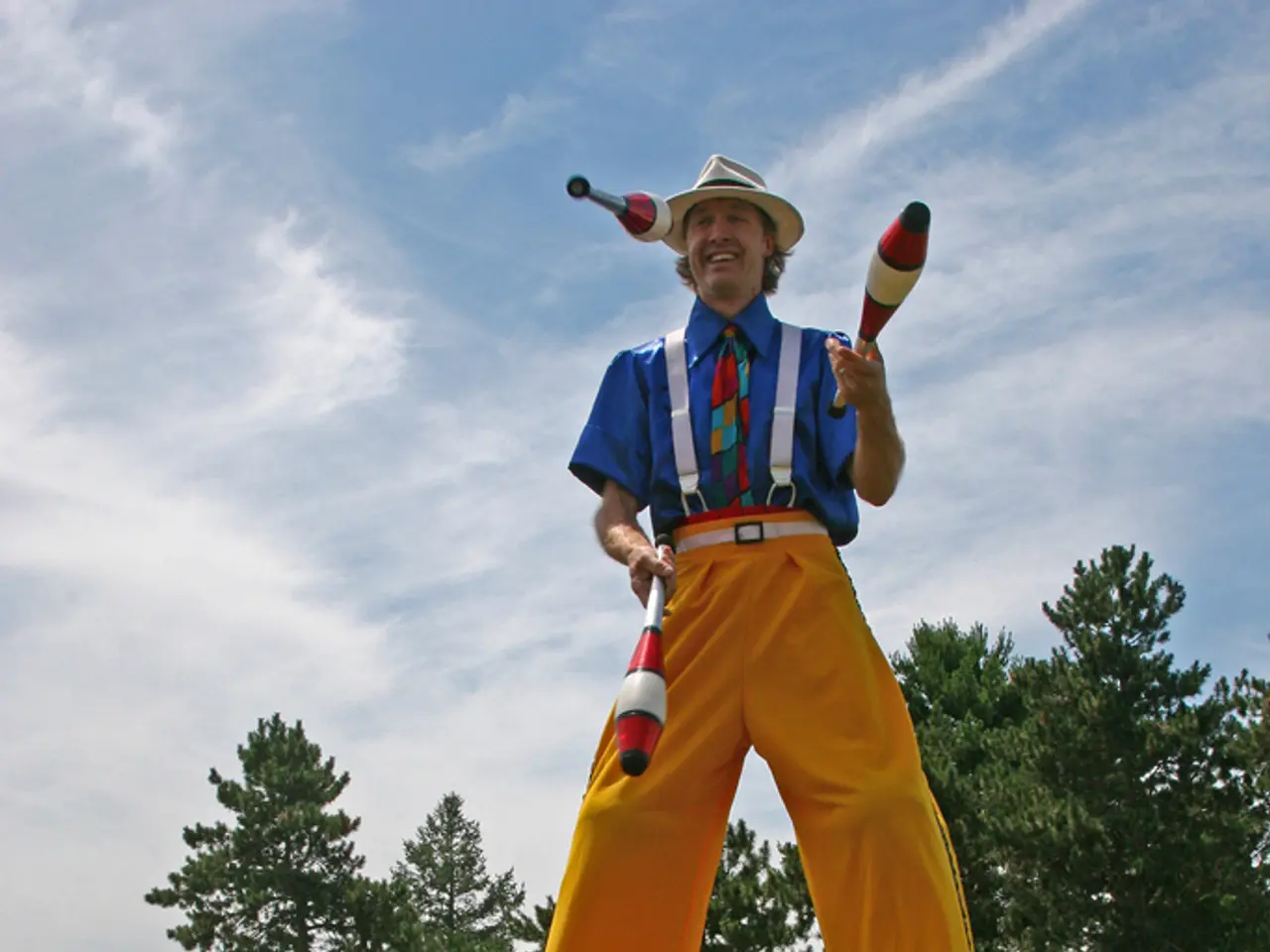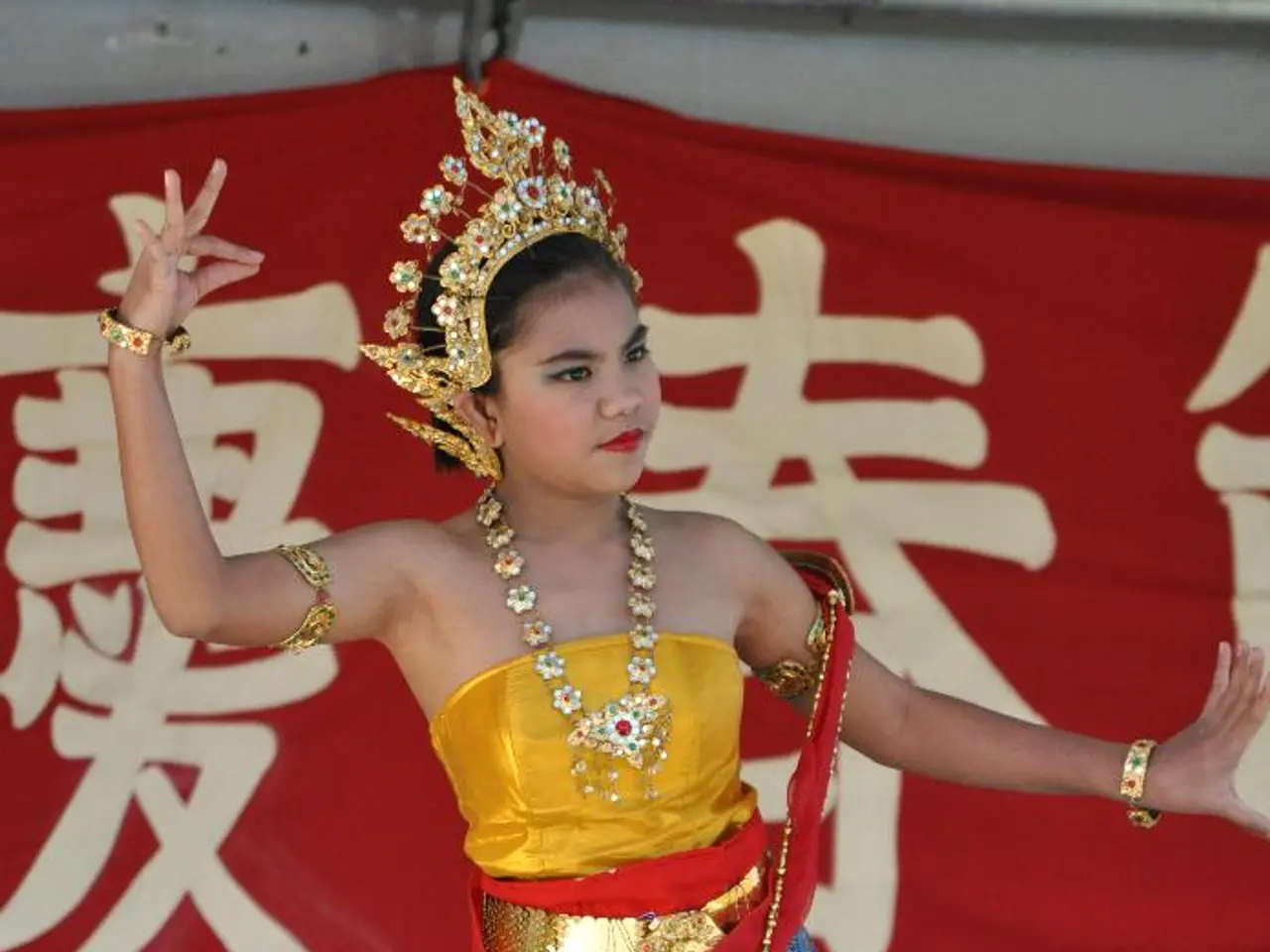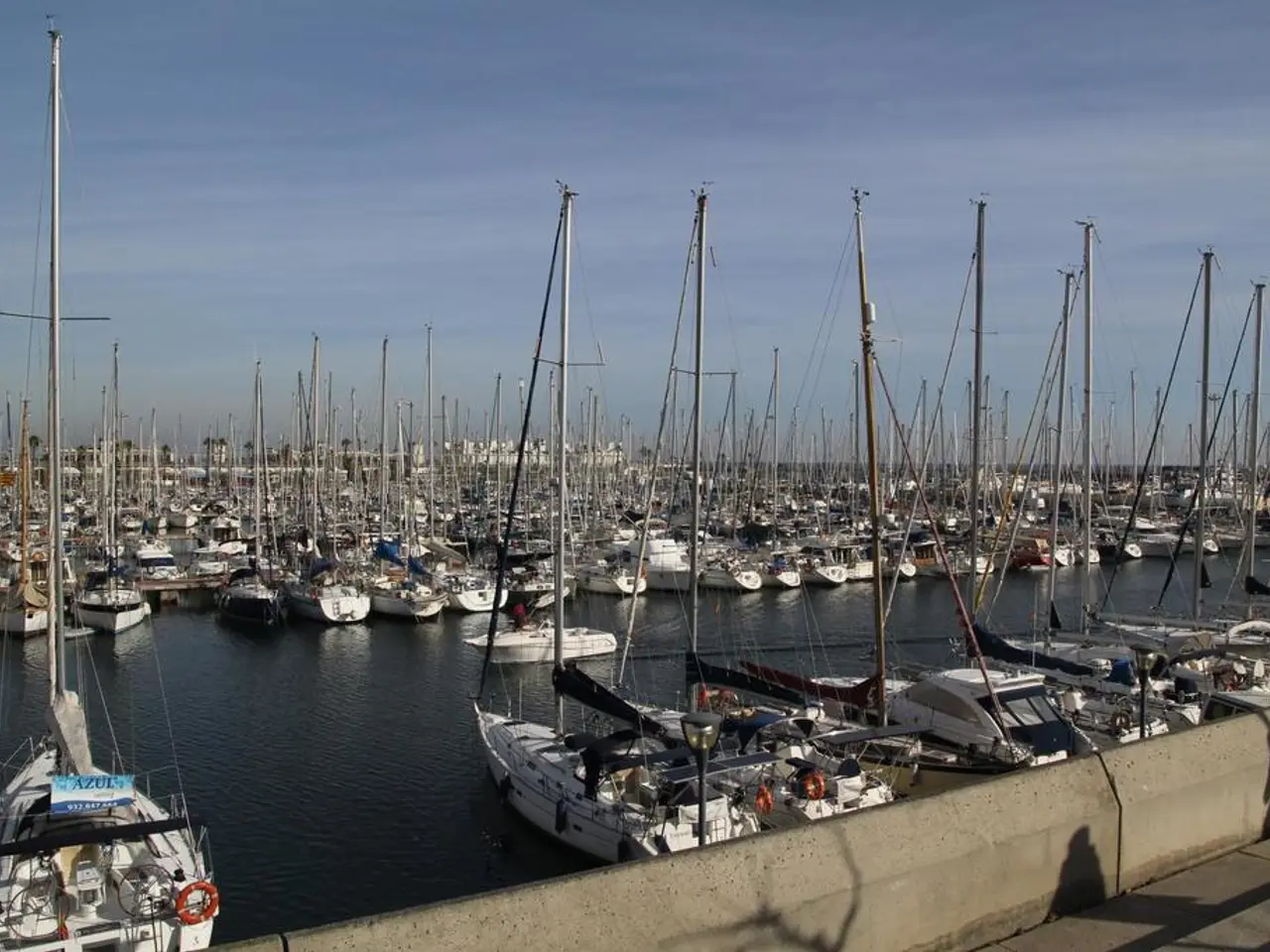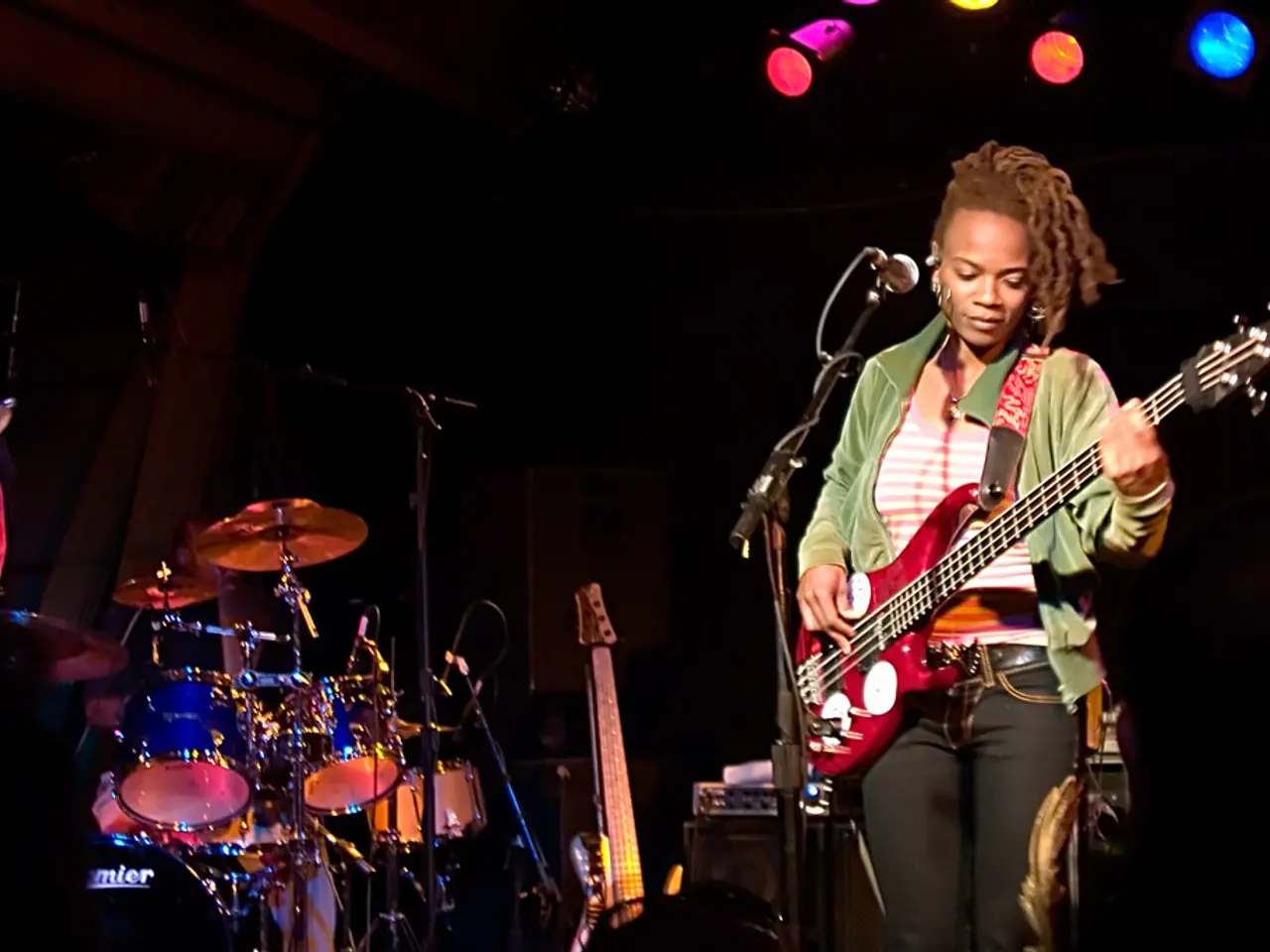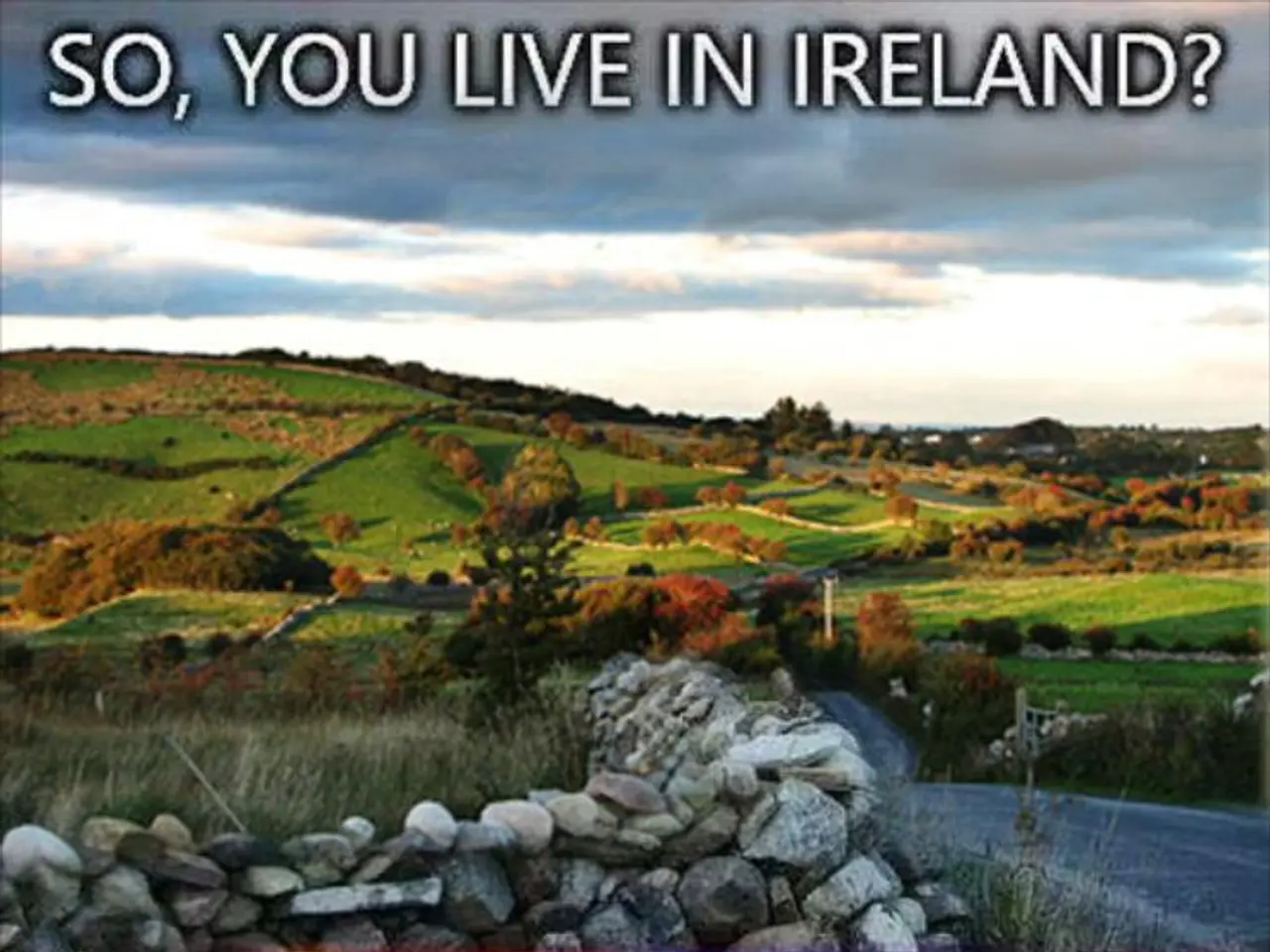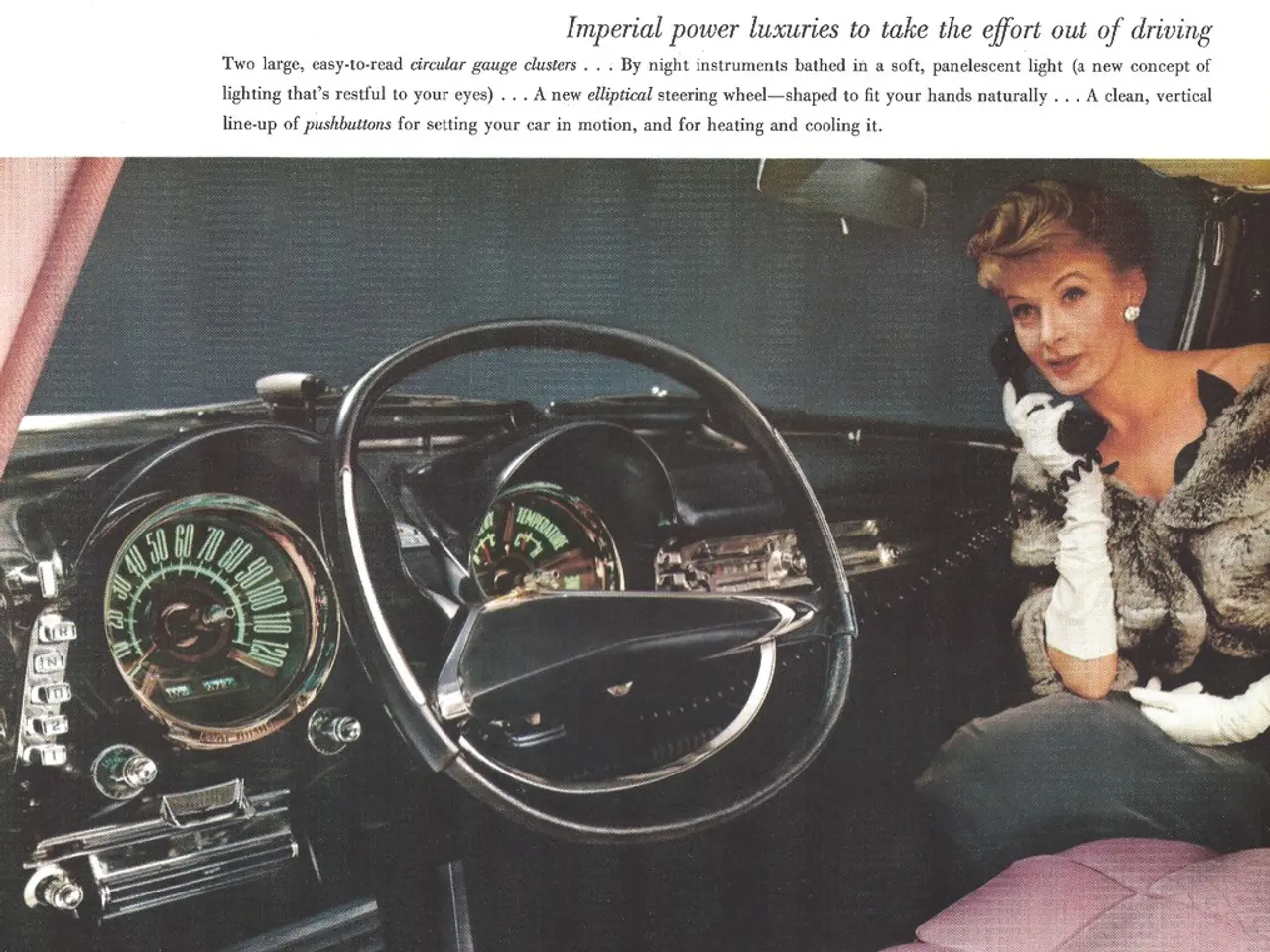Film About The Joker: Transforming Sinister Clowns into Radical Figures of Resistance
In the world of Gotham City, the figure of the Joker has long been a source of intrigue and fear. This enigmatic villain, known for his grotesque appearance and unpredictable nature, has become a symbol of chaos and anarchy. However, the Joker's origin story is not as clear-cut as that of Batman, his dark counterpart.
The most common version of the Joker's origin involves a man disguised as the Red Hood, who falls into a chemical vat during a confrontation with Batman. This tragic incident disfigures him, transforming him into the Joker with his white skin, green hair, and a grotesque red smile [1]. Unlike Batman, the Joker lacks a definitive backstory, emphasising his role as an agent of chaos and unpredictability [4].
Thomas Wayne, Bruce Wayne’s father, is central to Batman’s origin but has a more indirect connection to the Joker. Bruce witnesses the murder of Thomas and Martha Wayne as a child, which motivates him to become Batman [2]. However, traditional Joker stories do not link him directly to Thomas Wayne, though some modern adaptations and theories in comics and films explore more nuanced relationships and the impact of the Waynes on Gotham’s criminal underworld.
The 2019 Joker movie starring Joaquin Phoenix presents a standalone backstory for the character Arthur Fleck, who becomes the Joker. The film focuses heavily on socio-political themes like economic inequality, mental health neglect, and societal alienation. It portrays Gotham as a city rife with class conflict and political unrest, where the Joker emerges as a symbol of rebellion against the elites, implicitly including the wealthy Waynes who represent the establishment [1][4]. The movie uses this setting to explore how systemic neglect and social divides can contribute to the creation of violent chaos embodied by the Joker.
The Joker's actions are a stark contrast to the heroism of Batman. He has been responsible for the murders of three Wall Street boys on a subway, a coworker, and a comedian on live TV. His actions reflect a sense of righteous revolution and a lack of conscience [5].
The theory posits that clowns (representing the Joker and others like him) will one day make a revolution by eating the rich. This idea is a chilling reminder of the violent potential of societal unrest and the blurred line between hero and villain in the world of Gotham City [6].
The phrase "The Joke is on them" is used, suggesting a sense of irony or satisfaction in the movie's perceived failure to meet expectations. The Joker movie, however, has been criticised as boring by some, while others compare it unfavourably to other projects associated with the General Staff of the Revolution, such as Venezuela, Obamacare, and the War on Poverty [3].
In summary, the Joker's origin is often a man falling into chemicals, causing his transformation and madness [1]. Thomas Wayne is the murdered father of Bruce Wayne, whose death motivates Batman but traditionally has no direct origin tie to the Joker [2]. The Joker movie emphasises political and social themes like inequality, mental illness, and class conflict, framing the Joker as a reaction against Gotham’s elite, including the Waynes [4]. This reflects the Joker’s core as Batman’s chaotic foil with multiple possible backstories filtered through different thematic lenses across media. The clown protests turn violent, leading to the murder of Thomas Wayne and his wife, underscoring the dangerous potential of societal unrest and the blurred line between hero and villain in Gotham City.
In the realm of movies-and-tv shows, the depiction of the Joker often mirrors the chaotic nature of entertainment and pop-culture, particularly in the genre of sci-fi-and-fantasy. For instance, the 2019 Joker movie explores his origin story through a lens of socio-political issues, emphasizing his role as a symbol of rebellion against the establishment, much like the Joker's portrayal in comics and animations does.
